Seamless Soaker - Free Pattern March 13, 2022 13:20

This soaker begins between the legs with a provisional cast-on. The back is worked while shaping the legholes then the back stitches are placed onto a stitch holder or waste yarn. Front stitches are picked up from the provisional cast-on and the legholes are shaped to the same length as the back. The back and front stitches are joined, casting on a few stitches at the top of each leghole. The body is then worked in the round maintaining the garter ridge pattern over the back and working stockinette stitch on the front. The top band is worked in ribbing or with a drawstring to suit your yarn choice.
When choosing a wool yarn for your soaker take into consideration how well that yarn holds the elasticity in ribbing. I suggest knitting a small swatch (at least 2" (5 cm) square) in 1 x 1 Ribbing and washing your swatch in cool water, stretching and pinning it to dry. If the ribbing bounces back together when dry then it's a good choice to use ribbing on your top band. If the ribbing stays stretched out, I suggest knitting the top band with the drawstring.
Check out the pattern on Ravelry.
Purchase the Ad-Free PDF from Ravelry.
Sizes
Newborn (0–3 mos, 3–6 mos, 6–9 mos, 9–12 mos, 1–2 years)
Finished Measurements
14¼ (16, 18¼, 20, 22¼)" / 36 (40.5, 46.5, 51, 56.5) cm around diaper.
Suggested Ease: 0–1" / 0–2.5 cm negative ease.
Yarn
Aran Weight (CYCA #5 Medium)
100% wool (see notes): approx 90 (110, 140, 160, 190) yards / 82 (101, 128, 146, 174) meters
Needles
Size US 5 / 3.75 mm: dpns and/or 16” (40 cm) circular needle.
Size US 6 / 4 mm: Straight and dpns or 16” (40 cm) circular needle.
Or size needed to obtain gauge.
Notions
Size US G-6 / 4 mm: Crochet hook and waste yarn for provisional CO
Stitch holders or waste yarn
2 stitch markers
Tapestry needle
Gauge
18 sts and 24 rows/rnds = 4" / 10 cm in St st with larger needle. Take time to save time, check your gauge.

Notes
Soaker begins between the legs with a provisional cast-on. The back is worked while shaping the legholes then the back stitches are placed onto a stitch holder or waste yarn. Front stitches are picked up from the provisional cast-on and the legholes are shaped to the same length as the back. The back and front stitches are joined, casting on a few stitches at the top of each leghole, then the body is then worked in the round, maintaining the garter ridge pattern over the back and working stockinette stitch on the front. The top band is worked in ribbing or with a drawstring to suit your yarn choice.
When choosing a wool yarn for your soaker take into consideration how well that yarn holds the elasticity in ribbing. I suggest knitting a small swatch (at least 2" / 5 cm square) in 1 x 1 Ribbing and washing your swatch in cool water, stretching and pinning it to dry. If the ribbing bounces back together when dry then it’s a good choice to use ribbing on your top band. If the ribbing stays stretched out, I suggest knitting the top band with the drawstring.
Do NOT use a superwash wool for this project.

Pattern
Back
With waste yarn and larger straight needle, use the provisional method to CO 17 (19, 21, 23, 25) sts. Beg working Flat Garter Ridge Patt while shaping the legholes as follows:
Shape Legholes:
Work 1 WS row in Flat Garter Ridge Patt.
Inc Row: (RS) K1, m1, work to last st, m1, k1—2 sts inc’d.
Rep the last 2 rows 5 (5, 5, 8, 10) times—29 (31, 33, 41, 47) sts.
Inc Row: (WS) P1, m1p, work in Flat Garter Ridge Patt to last st, m1p, p1—2 sts inc’d.
Inc Row: (RS) K1, m1, work in Flat Garter Ridge Patt to last st, m1, k1—2 sts inc’d.
Rep the last 2 rows 0 (1, 2, 1, 1) times—33 (39, 45, 49, 55) sts.
Last row of Garter Ridge Patt worked should be RS Row 2 (4, 6, 4, 2).
Break yarn and place sts onto st holder or waste yarn.
Front
Carefully remove waste yarn from provisional cast-on placing 17 (19, 21, 23, 25) sts onto larger needle and join yarn to beg working a RS row.
Knit 2 rows, ending after a WS row.
Work 7 (9, 9, 13, 17) rows even in Flat St st, ending after a RS row.
Shape Leghole:
Purl 1 WS row.
Inc Row: (RS) K1, m1, knit to last st, m1, k1—2 sts inc’d.
Rep the last 2 rows 2 (2, 3, 3, 3) times—23 (25, 29, 31, 33) sts.

Body
Keeping yarn attached, slip front sts onto a larger dpn or circular needle and join front and back sts to work in the round as follows:
Joining Rnd: With RS of front still facing, pm for beg of rnd, use the backwards loop method to CO 4 (4, 4, 5, 6) sts, return 33 (39, 45, 49, 55) back sts onto 2 larger dpns, then work Rnd 3 (5, 1, 5, 3) of Circular Garter Ridge Patt to end of back sts, CO 4 (4, 4, 5, 6) sts, pm, then knit 23 (25, 29, 31, 33) front sts—64 (72, 82, 90, 100) sts.
Note: If working on dpns, divide sts so the back and CO sts are divided over 2 dpns and the front sts are on a third dpn This divides them at the markers. If divided in this manner, you may remove the markers.
Est Patt: Work Rnd 4 (6, 2, 6, 4) of Circular Garter Ridge Patt to m, sl m, work in St st to end of rnd, sl m.
Work 1 more rnd as est, ending after Rnd 5 (1, 3, 1, 5) of Garter Ridge Patt.
Shape Back with Short-Rows as follows:
Short-Row 1: (RS) Work Row 6 (2, 4, 2, 6) of Flat Garter Ridge Patt to m, sl m, wrap next st and turn so WS is facing.
Short-Row 2: (WS) Work Row 1 (3, 5, 3, 1) of Flat Garter Ridge Patt to beg of rnd m, sl m, wrap next st and turn so RS is facing.
Next Rnd: (RS) Work Rnd 2 (4, 6, 4, 2) of Circular Garter Ridge Patt to m, sl m, knit the wrapped st working it together with the wrap, knit to last front st, knit the wrapped st working it together with the wrap.
Work in St st and Circular Garter Ridge Patt (do not work short rows) as est for 10 (10, 12, 12, 12) more rnds, ending after Rnd 6 (2, 6, 4, 2) of Garter Ridge Patt.
Front should meas about 2¼ (2¼, 2¾, 2¾, 2¾)" / 5.5 (5.5, 7, 7, 7) cm from
body CO.
Continue working either the Ribbed or Drawstring Top Band as desired
(see Notes).

Purchase the Ad-Free PDF from Ravelry.
Ribbed Top Band
Est Ribbing: Work Rnd 1 (3, 1, 5, 3) of Garter Ridge Patt to m, sl m, k1, *p1, k1; rep from * to end of rnd, sl m.
Short-Row 3: (RS) Work Row 2 (4, 2, 6, 4) of Flat Garter Ridge Patt to m, sl m, wrap next st and turn so WS is facing.
Short-Row 4: (WS) Sl m, work Row 3 (5, 3, 1, 5) of Flat Garter Ridge Patt to beg of rnd m, sl m, wrap next st and turn so RS is facing.
Next Rnd: (RS) Work Rnd 4 (6, 4, 2, 6) of Circular Garter Ridge Patt to m, sl m, knit the wrapped st working it together with the wrap, work in rib as est to last front st, knit the wrapped st working it together with the wrap.
Work St st and Circular Garter Ridge Patt (do not work short rows) as est for 2 (6, 8, 10, 12) more rnds, ending after Rnd 6 of Garter Ridge Patt.
(Note: If you want the top ribbing to be a different color, work Rnd 6 in the new color, knitting across the front ribbed stitches.)
Front should meas about 3 (3¾, 4¼, 4¾, 5)” / 7.5 (9.5, 11, 12, 12.5) cm from body CO.
Change to smaller dpn or circular needle.
Est Ribbing: *P1, k1; rep from * around removing marker between back and front.
Cont working in 1 x 1 Rib for 2" (5 cm). BO all sts very loosely in rib, using a larger needle if necessary.
Continue to work legs, below.

Drawstring Top Band
Work 1 rnd even as est, ending after Rnd 1 (3, 1, 5, 3) of Garter Ridge patt.
Short-Row 3: (RS) Work Row 2 (4, 2, 6, 4) of Flat Garter Ridge Patt to m, sl m, wrap next st and turn so WS is facing.
Short-Row 4: (WS) Sl m, work Row 3 (5, 3, 1, 5) of Flat Garter Ridge Patt to beg of rnd m, sl m, wrap next st and turn so RS is facing.
Next Rnd: (RS) Work Rnd 4 (6, 4, 2, 6) of Circular Garter Ridge Patt to m, sl m, knit the wrapped st working it together with the wrap, knit to last front st, knit the wrapped st working it together with the wrap.
Work St st and Circular Garter Ridge Patt (do not work short rows) as est for 7 (11, 13, 15, 17) more rnds, ending after Rnd 5 of Garter Ridge Patt.
Next Rnd: Remove beg of rnd m, knit to first m, remove m, k10 (11, 13, 14, 15) front sts, ssk—63 (71, 81, 89, 99) sts rem.
The new beg of the rnd is at the center of the front.
Front should meas about 3¾ (4½, 5¼, 5½, 5¾)” / 9.5 (11.5, 13.5, 14, 14.5) cm from body CO.
Turn to work back and forth in rows.
Row 1: (WS) Sl 1 pwise wyf, purl to end.
Row 2: (RS) Sl 1 pwise wyb, knit to end.
Row 3: Rep Row 1.
Row 4: Sl 1 pwise wyb, knit to last st, pm for beg of rnd and join to work in the rnd by knitting the last st of the row together with the first st on the other side of the gap.
Change to smaller dpn or circular needle.
Turning Rnd: Purl.
Knit 5 rnds.
Fold work at the turning rnd so WS’s are facing together. With tip of left needle pick up 1 st (corresponding with the first st on the needle) from the WS of the band, then knit the picked up st together with the next st on the needle; rep from * and BO all sts loosely at the same time.

I-Cord Tie:
With smaller dpns, CO 2 sts. Work I-Cord until piece meas 28 (32, 38, 40, 44)" / 71 (81.5, 96.5, 101.5, 112) cm long or desired length. Fasten off leaving a long tail. Thread tail onto tapestry needle and thread through hem.
Legs
With smaller dpn, beg at center of body CO sts, pick up and knit 2 (2, 2, 2, 3) sts in CO sts, 1 st at gap between CO sts and selvedge edge, 28 (32, 38, 45, 54) sts along selvedge edge of leghole to the other side of the body CO sts, pick up and knit 1 st at the gap between the selvedge edge and the CO sts, then 2 (2, 2, 3, 3) sts in the rem body CO sts—34 (38, 44, 52, 62) sts.
Est patt: *K1, p1; rep from * around.
Work as est for 8 more rnds.
BO all sts very loosely in rib, using a larger needle if necessary.
Repeat for the second leg.
Finishing
Weave in ends.
Wash soaker in cool or luke-warm water with a wool-wash soap.
Lanolize after washing.
Pattern Stitches
Provisional Cast-on Method: With waste yarn, beg with slipknot on crochet hook. *Wrap yarn around knitting needle counter-clockwise, then use crochet hook to draw yarn through loop on hook; rep from * for desired number of sts. Fasten off. See the photo tutorial.
Flat Garter Ridge Pattern:
(any number of sts)
Rows 1 and 3 (WS): Purl.
Rows 2 and 4: Knit.
Row 5 (WS): Knit.
Row 6: Knit.
Rep Rows 1–6 for patt.
Circular Garter Ridge Pattern:
(any number of sts)
Rnds 1–4: Knit.
Rnd 5: Purl.
Rnd 6: Knit.
Rep Rnds 1–6 for patt.
Flat Stockinette Stitch:
Knit on RS, purl on WS.
Circular Stockinette Stitch:
Knit all sts, every rnd.
Backward Loop Cast-on Method: *Wrap yarn around left thumb from front to back and secure in palm with other fingers, insert right needle upwards through strand on thumb, slip loop from thumb onto needle, pulling yarn to tighten; rep from * for desired number of sts. Watch the video, below.
Short-Rows / Wrap and turn:
RS row—Wyb, sl next st purlwise onto right needle, bring yarn to front of work, return slipped st to left needle, bring yarn to back of work, then turn work.
WS row—Wyf sl next st purlwise onto right needle, bring yarn to back of work, return slipped st to left needle, bring yarn to front of work, then turn work.
Short-Rows / Hide Wraps:
RS row—Pick up the wrap from the front with the right needle and knit together with the st it wraps.
WS row—pick up the wrap through back of loop with right needle and purl together with the st it wraps.
I-Cord:
Using 2 dpns, *knit 1 row; without turning the work, slide sts to right end of needle, pull yarn tightly; rep from * until cord meas desired length.
How to Lanolize
Lanolizing the soaker helps to water-proof it so the moisture from the diaper doesn’t seep into Baby’s clothes. This is the method I use, though there are many similar methods available if you search online. The soaker can be used many times between washing/lanolizing. The antibacterial properties of wool keep it sanitary, and it dries quickly between uses. I recommend washing and lanolizing your soaker every 2-3 weeks, depending on how often it is used.
Materials Needed:
Sink; lanolin (I use Lansinoh); hot (boiled) water; jar with tight-fitting lid; oven mitt.
Instructions:
Boil some water.
After washing your soaker in cool or luke-warm water remove it from the sink but keep the soaker wet. Drain the soapy water and fill the sink with warm water (about a few inches deep). Don’t use water that’s too hot or it will felt your soaker, shrinking it. Luke warm is best.
Carefully pour boiled water into the jar, until it’s about half full. Add about 1" (2.5 cm) of Lanolin into the jar of boiled water. Use the oven mitt to handle the jar, screw the lid on tight and shake it until all the lanolin has dissolved and the water is a milky color.
Pour contents of jar into the sink of water and swish it around.
Add soaker and let it soak for a few hours or overnight.
Remove from water and lay flat to dry.
Abbreviations
beg: begin(ning)
BO: bind off
CO: cast on
cont: continue
dpn(s): double-pointed
needle(s)
est: establish(ed)
inc(‘d): increase(d)
k: knit
m: marker
m1: (make 1) insert left needle under horizontal strand between st just worked and next st, from the front to the back, knit through the back loop
m1p: (make 1 purlwise) insert left needle under horizontal strand between st just worked and next st, from the back to the front, purl
meas: measure(s)
mos: months
p: purl
patt: pattern
pm: place marker
pwise: purlwise
rep: repeat
rnd(s): round(s)
RS: right side
sl: slip
st(s): stitch(es)
WS: wrong side
wyb: with yarn in back
wyf: with yarn in front




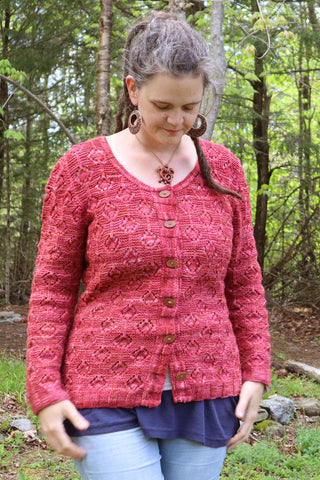
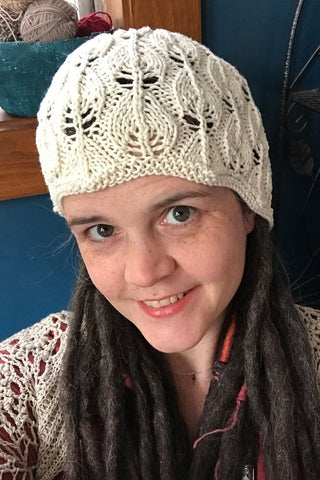

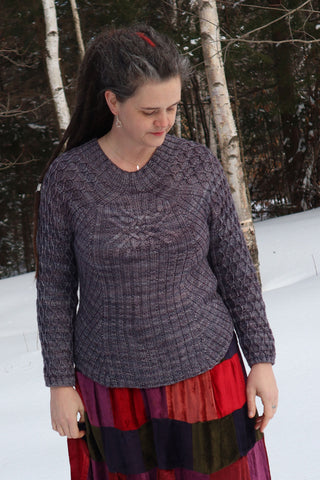
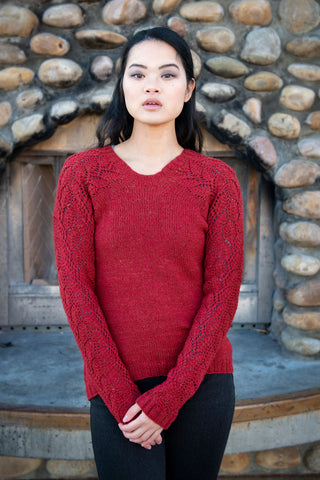
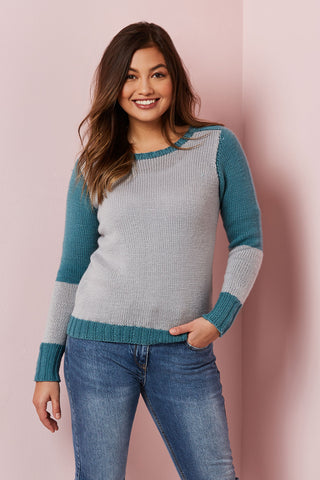
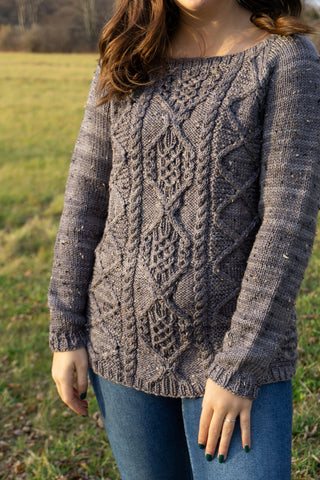
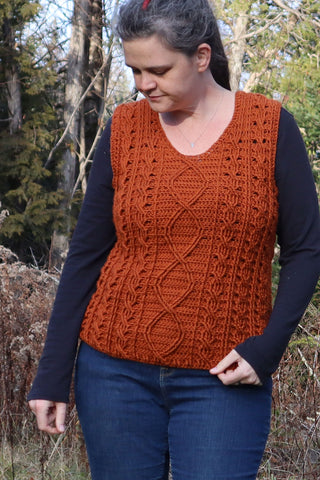
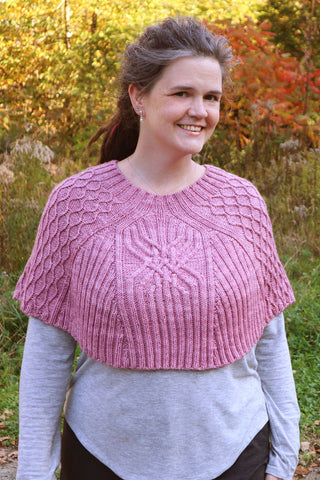
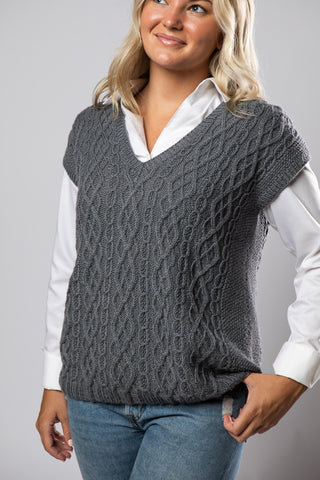
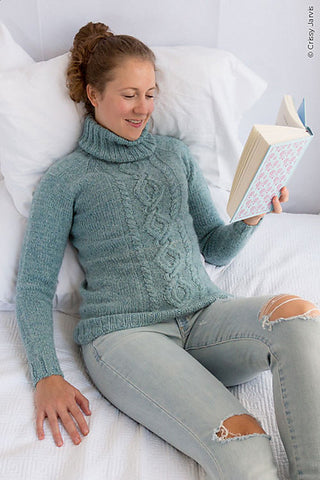
 Nothing will be posted on your behalf.
Nothing will be posted on your behalf.

